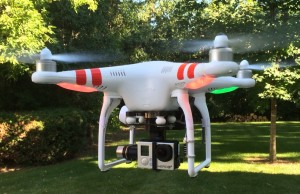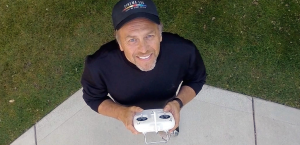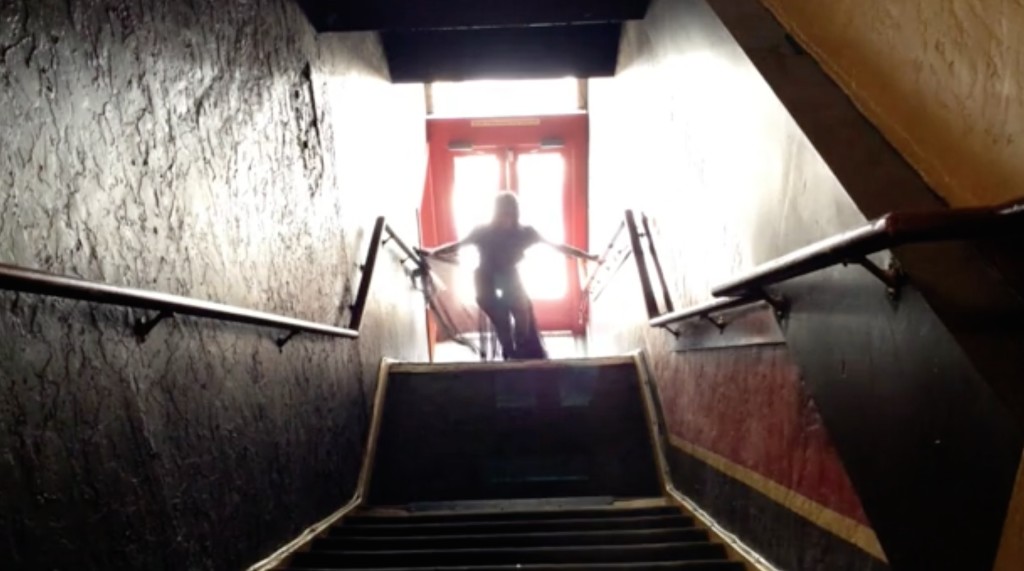Aerial photography isn’t new. A French photographer Gaspar-Felix Tournachon took the first still photos from a ballon in 1858. Half a century later, in 1909, an unknown German cameraman shot the first aerial movie—”Wilbur Wright ind seine Flugmaschine.” By the 1920s, Hollywood moviemakers were producing spectacular aerial footage that featured everything from wing walkers to dramatic crashes.
Now, thanks to advances in radio-controlled models and the development of light-weight cameras, we’re entering a second Golden Age of aerial photography. One of the practioners—Frank Datzer—takes us behind (and above) the scenes. For him, one of the motivations to shoot from on high is that it gives the audience “a unique and often beautiful angle on an otherwise common scene.
MMM: Can you tell us about the aircraft that you used in the making of “MKE Lagoon”
Frank: I’m using a Phantom 2 quad copter. I’m new to aerial videography, but I’ve been a videographer for more than 25 years.
MMM: What kind of cameras did you shoot with.
Frank: I’ve got a GoPro 3 and GoPro 3+ mounted on a H3-3D gimbal – I’m always impressed with the Go Pros. I’ve owned one since the very first one they made. I’ve always used them in situations when a larger camera just wouldn’t work or the rig would be too complex – such as mounted on a machine or in a car. The latest models now offer 2.7k resolution at 30fps and 24fps. This extra resolution allows me to zoom and crop the image to improve my composition.
MMM: What was the location for this video?
Frank: I shot the “MKE Lagoon” segment just a few yards east of Lake Michigan in Milwaukee on what we call the “Lakefront.” We have a little lagoon there where people picnic, fish, rent paddle boats and engage in other outdoor activities. I am and avid cyclist and ride by this lagoon just about every morning on my rides. I’ve got into the habit of taking two or three still pictures on each of my rides – just for fun and practice – to improve my composition skills. This area has has been the subject of many of my morning pictures.
MMM: Given that you were shooting over water, did you have any concerns that you might lose all your equipment in a crash?
Frank: The rig I have is not cheap. I’ve practiced flying for quite a few hours safely over fields and at my sister-in-law’s farm. It helped build my confidence for these types of shoots. I’m always a little nervous when flying over water or where I may not be able to recover my quad in case of a failure. But sometimes you have to risk a little to get the good shot. When I say risk – I mean my own risk – I never fly over people – who aren’t aware of what I’m doing – or over crowds. I stay below 400′ and stay at least 5 miles from the nearest airport. These are FAA guidelines and I think – these and other precautions are really just common sense.
MMM: Can you share the secret for getting such smooth shots?
Frank: The H3-3D gimbal is really the star here. But I do have a few things I’ve learned. I try to be very controlled in my movements and make them slow and deliberate. I also always try to pan counter-clockwise – because of the camera’s wide angle the compass sensor – which mounted on the left portion of the landing gear sometimes will appear in the shot when panning clockwise. I also like to move up to the object, person or place of interest and then fly away from it – this is more dramatic and results in – what I consider – a nicer look to the movement.
MMM: The lighting is spectacular.
Frank: I try to shoot in the early morning and later afternoon – as all photographers know – these are the times for the best natural light – “golden hour.”
MMM: Could you tell us about your training?
Frank: I attended the University of Wisconsin Milwaukee – and studied film and mass media for 3 years – although I finished my degree in Management and Communications. I owned and operated a small video production business early in my career and later was hired to create the video department for First Wisconsin Bank. Due to mergers and acquisitions -that later turned into a position as the Senior Producer and Manager of the video service department for USBank Corporation. I produced PR, training, news and other corporate video there for 12 years. When they wanted me to move to Minneapolis – I declined and left that position. I presently work as a freelance videographer and DP and I’m partner in a small DVD authoring and duplication company called Disc Cloners Plus, Inc. I also shoot for Getty Images and you can find my video from Tokyo Japan, Key West Florida and Seattle Washington in their HD Stock Video library. I’ve also worked as Director of Photography and editor for 2 independent feature films for Salty Earth Pictures and a few music videos.
MMM: What advice do you have for mobile moviemakers who’d like to try aerial cinematography?
Frank: Keep the composition and subject in mind. Just getting your camera in the air is not going to make it a great shot. In fact I’m finding some of my favorite shots are captured at a low angle and low altitudes. Also, be sure to be aware of your surroundings. There is quite a bit of bad press and controversy surrounding “drones” at the moment. Don’t “feed the beast.” Be safe, smart and don’t put people or property in danger.
* * *
You can see more of Frank’s video work here.





 Previous post
Previous post
 Next post
Next post





